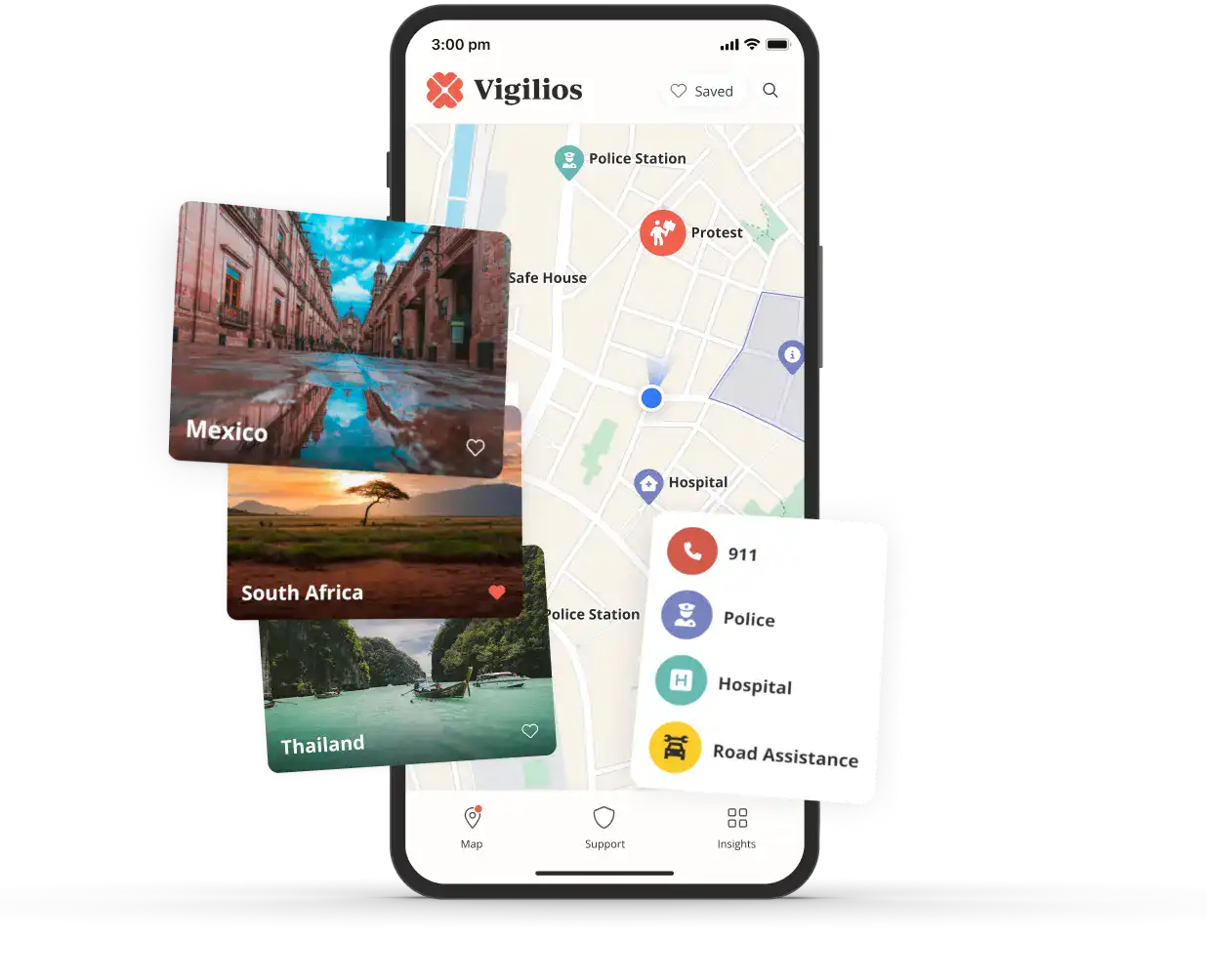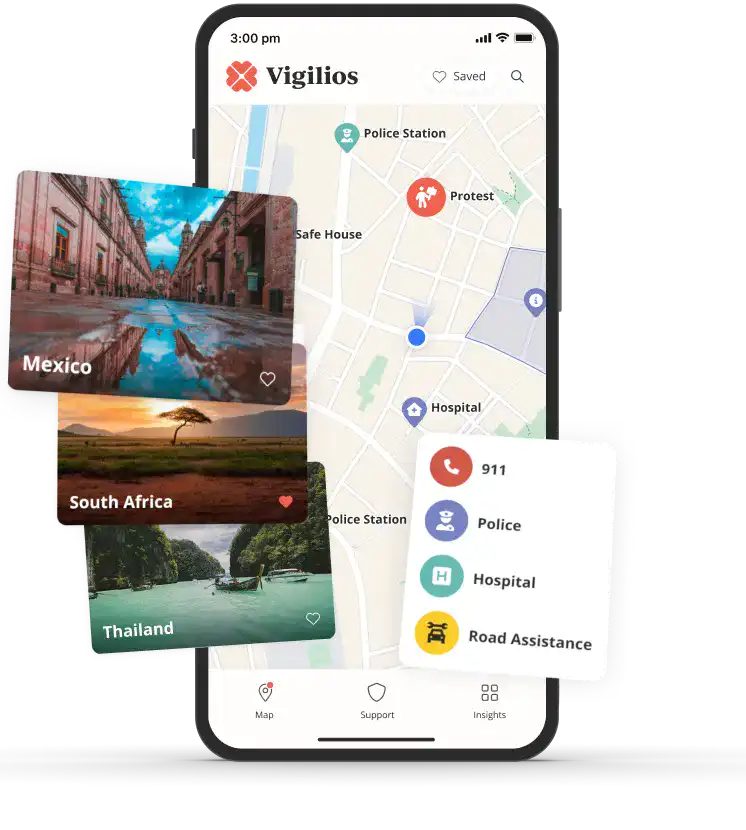


Is Santa Marta in Colombia Safe?
Santa Marta in Colombia has a moderate risk of petty crime and robbery, especially in tourist areas. While violent crime rates are relatively low, travelers should remain vigilant and avoid isolated areas, particularly at night. The city experiences occasional civil unrest and protests, which can disrupt transportation. Travelers should exercise caution during large gatherings and monitor local news. Overall, Santa Marta is generally safe for tourists who take reasonable precautions.
Safety & Security
Santa Marta, a coastal city in Colombia, has a relatively high crime rate compared to other tourist destinations. Petty crimes like pickpocketing and bag snatching are common, especially in crowded areas and on public transportation. Violent crimes, including armed robberies and muggings, also occur, though they are less frequent.
- Tourists should exercise caution and avoid isolated areas, especially at night. Remain vigilant and keep valuables out of sight.
- Disputes and scams targeting tourists are not uncommon. Be wary of friendly strangers offering unsolicited help or services.
- While terrorism is not a significant threat in Santa Marta, civil unrest and protests can occur, potentially disrupting travel plans.
Precautions are advised, but many tourists visit Santa Marta without incident by taking reasonable safety measures. Staying in well-established tourist areas and using reputable tour operators can help mitigate risks.
Health & Medical
Travelers to Santa Marta in Colombia should be aware of potential health risks and take necessary precautions. While the city has decent medical facilities, it's advisable to have comprehensive travel insurance and seek medical attention promptly if needed.
-
Insect-Borne Diseases: Mosquito-borne illnesses like dengue fever, Zika virus, and malaria are prevalent in some areas. Use insect repellent, wear long sleeves/pants, and consider antimalarial medication if visiting high-risk zones.
-
Vaccinations: Ensure routine vaccinations are up-to-date, and consider hepatitis A, typhoid, and yellow fever vaccines depending on your travel plans.
-
Food and Water Safety: Drink bottled or purified water and avoid raw or undercooked food to prevent traveler's diarrhea and other foodborne illnesses.
-
Air Pollution: Santa Marta experiences moderate air pollution levels, which may exacerbate respiratory conditions. Those with asthma or lung diseases should take necessary precautions.
-
Medical Facilities: While Santa Marta has several private clinics and hospitals, the quality of care may vary. Serious medical emergencies may require evacuation to a major city like Bogotá or Medellín.
Natural Disasters
Santa Marta, located on Colombia's Caribbean coast, is generally not at high risk for natural disasters. However, travelers should be aware of the following potential hazards:
-
Hurricanes and Tropical Storms: The Caribbean hurricane season runs from June to November, with the peak months being August to October. While direct hits are rare, heavy rainfall, flooding, and high winds can occur during this period.
-
Earthquakes: Colombia lies along the Pacific Ring of Fire, making it susceptible to earthquakes. Santa Marta has experienced minor tremors in the past, but the risk of a major quake is relatively low compared to other regions.
-
Landslides: Heavy rainfall can trigger landslides, especially in mountainous areas near Santa Marta. Travelers should exercise caution when hiking or exploring remote areas during the rainy season.
-
Coastal Flooding: Rising sea levels and storm surges can cause coastal flooding, particularly during the hurricane season. Beachfront properties and low-lying areas may be at risk.
While natural disasters are not a major concern in Santa Marta, it's always advisable to stay informed about weather conditions, follow local authorities' instructions, and have a contingency plan in case of emergencies. Travelers should also consider purchasing comprehensive travel insurance that covers natural disasters.
Transportation
Transportation in Santa Marta is generally safe and reliable for travelers. The city has a decent public transportation system consisting of buses and taxis. However, it's advisable to exercise caution when using these services.
- Public Buses: The bus system is affordable and covers most areas of the city. However, buses can be crowded and prone to petty crime, so keep valuables secure.
- Taxis: Taxis are a convenient option, but only use licensed taxis from official taxi stands or have your accommodation call one for you. Avoid unmarked cabs to prevent potential scams or safety risks.
- Rental Cars: Renting a car can be a good option for exploring the region, but be cautious when driving as road conditions can vary, and traffic rules may not be strictly followed.
- Walking: Many areas of Santa Marta are walkable during the day, but exercise caution at night and avoid isolated areas.
- Road Safety: Roads can be congested and poorly maintained in some areas. Drivers should remain vigilant and defensive, especially when navigating through busy streets or rural roads.
Cultural Norms
Respecting the culture in Santa Marta, Colombia is essential for an enriching travel experience. This vibrant city boasts a rich blend of indigenous, African, and Spanish influences, reflected in its customs and traditions.
-
Festivals and Events: Santa Marta hosts several colorful festivals throughout the year, such as the Carnival celebrations in February/March and the Festival del Mar in July. Attending these events allows visitors to immerse themselves in the local culture while respecting the customs and traditions.
-
Dress Code: While casual attire is generally acceptable, it's advisable to dress modestly, especially when visiting religious sites or attending cultural events. Covering shoulders and knees is recommended.
-
Indigenous Communities: Santa Marta is home to several indigenous communities, including the Arhuaco, Kogui, and Wiwa. Visitors should be respectful of their traditions and refrain from taking photographs without permission.
-
Religious Customs: As a predominantly Catholic city, religious customs and traditions are deeply rooted in Santa Marta's culture. Visitors should be mindful of their behavior and dress code when visiting churches or attending religious ceremonies.
-
Local Cuisine: Trying local dishes is an excellent way to experience the culture. However, it's important to be respectful of local customs and etiquette when dining, such as avoiding gestures or behaviors that may be considered offensive.
Emergency Services
Emergency services in Santa Marta are generally reliable, but may have limitations compared to some Western countries. The city has ambulance services, firefighters, and police that can be contacted for emergencies. However, response times can vary depending on the location and availability of resources.
-
Ambulance Services: Ambulances are available through the local health system, but their response times and quality of care may not meet international standards in all cases. Private ambulance services are also an option for those willing to pay higher fees.
-
Fire Department: The fire department in Santa Marta is equipped to handle fires and other emergencies, but their resources can be stretched thin during major incidents.
-
Police: The local police force is responsible for maintaining law and order, but their capabilities and response times can be inconsistent. Tourists are advised to exercise caution and avoid high-risk areas.
-
Tourist Police: Santa Marta has a dedicated tourist police unit that can assist visitors with emergencies, lost documents, and other issues. However, their availability and language skills may be limited.
-
Private Security: Many hotels and resorts employ private security personnel who can assist guests in case of emergencies or incidents within their premises.
It's advisable for travelers to research and have contact information for reliable emergency services and their embassy or consulate before visiting Santa Marta.
Frequently Asked Questions

Is Santa Marta safe for tourists?
Santa Marta in Colombia is generally safe for tourists, but caution is advised. Petty crime like pickpocketing and bag snatching can occur, so keep valuables secure. Avoid isolated areas, especially at night, and use authorized taxis or ride-sharing services.
Is Santa Marta safe for solo female travelers?
Solo female travelers should exercise extra caution in Santa Marta. Avoid walking alone at night, dress conservatively, and be aware of your surroundings. Use trusted transportation services and stay in well-lit, populated areas. Harassment can occur, so trust your instincts and remove yourself from uncomfortable situations.
Is Santa Marta safe for families?
Santa Marta is a family-friendly destination with beaches, parks, and cultural attractions. However, be vigilant about safety, as petty crime can occur. Avoid isolated areas, especially at night, and use trusted transportation services. Ensure children are supervised at all times.
Is Santa Marta LGBTQ+ friendly?
While same-sex relationships are legal in Colombia, LGBTQ+ travelers should exercise caution in Santa Marta. Public displays of affection may draw unwanted attention or harassment. Research LGBTQ+-friendly establishments and events before visiting.
Do you need a visa to go to Santa Marta?
Many nationalities can visit Colombia visa-free for up to 90 days with a valid passport. However, visa requirements vary, so check with the Colombian embassy or consulate for your specific situation. It's always advisable to have a valid passport when traveling internationally.
Can you drink tap water in Santa Marta?
It is not recommended to drink tap water in Santa Marta. The water quality can be poor, and contamination may cause illness. Stick to bottled or purified water, even for brushing teeth or making ice.
What is the currency in Santa Marta?
The official currency in Santa Marta and throughout Colombia is the Colombian Peso (COP). While some establishments may accept US dollars, it's best to have Colombian Pesos on hand. Credit cards are widely accepted in major establishments.
Colombia Travel Advisory
The following government travel advisories provide additional helpful resources for your destination to stay safe and informed.
Related Content
- MEDIUM RISK
🇨🇴 Colombia
Colombia has made significant strides in improving safety, but risks persist. While major cities are generally safe, petty crime and robbery remain concerns, especially in tourist areas. Violent crime linked to drug trafficking occurs in certain regions. Civil unrest and protests can disrupt travel. Travelers should exercise caution, avoid isolated areas, safeguard valuables, and monitor local news for potential threats.
- MEDIUM RISK
🇨🇴 Barranquilla, Colombia
Barranquilla is generally safe for tourists, but caution is advised. Petty crime like pickpocketing is common, so remain vigilant in crowded areas. Violent crime rates are moderate, but tourists should avoid isolated areas, especially at night. The risk of terrorism is low, but be aware of your surroundings. Adequate medical facilities are available, but insect-borne diseases like dengue fever pose a risk.
- MEDIUM RISK
🇨🇴 Bogotá, Colombia
Bogotá has a moderate crime rate, with risks of petty theft, robberies, and disputes. Civil unrest occasionally disrupts transportation. While terrorism is rare, caution is advised in crowded areas. Adequate medical facilities are available, but insect-borne diseases like Zika and dengue pose health concerns. Respecting cultural norms, especially during religious events, is crucial for a smooth experience.
- MEDIUM RISK
🇨🇴 Cali, Colombia
Cali is generally safe for tourists, but caution is advised due to high crime rates. Petty theft and robberies are common, especially in crowded areas. Violent crime involving tourists is rare but does occur. Avoid isolated areas, particularly at night. Civil unrest stemming from political tensions can disrupt travel plans. Remain vigilant and follow local advisories.
- MEDIUM RISK
🇨🇴 Cartagena, Colombia
Cartagena is generally safe for tourists, though petty crime like pickpocketing is common in crowded areas. Violent crime rates are moderate, but tourists should avoid isolated areas at night. Scams targeting foreigners occur, so remain vigilant. The risk of civil unrest is low, but tensions can escalate during protests. Tap water is unsafe to drink, so stick to bottled water.
- MEDIUM RISK
🇨🇴 Copacabana, Colombia
Copacabana in Colombia is generally safe for tourists, but caution is advised. Petty crime like pickpocketing is common, so remain vigilant in crowded areas. Violent crime rates are moderate, but tourists are rarely targeted. Avoid isolated areas at night. The risk of civil unrest is low, but stay updated on local news. Medical facilities are adequate, but travel insurance is recommended for emergencies.
- MEDIUM RISK
🇨🇴 Fresno, Colombia
Fresno in Colombia has a moderate crime rate, with risks of petty theft and robberies. Tourists should exercise caution in certain areas, especially at night. The city experiences heavy rainfall during the rainy season, increasing the risk of flash floods. Adequate medical facilities are available, but travelers should get vaccinations for diseases like yellow fever. Respecting local customs and being culturally aware is advisable for a smooth travel experience.
- MEDIUM RISK
🇨🇴 Guadalupe, Colombia
Guadalupe in Colombia poses moderate safety risks for travelers. While petty crime is common, violent crime remains relatively low. However, caution is advised due to the presence of drug trafficking groups and civil unrest in some areas. Travelers should avoid protests, remain vigilant, and follow local advisories. Adequate medical facilities are available in major cities, but insect-borne diseases like dengue and Zika are concerns.
- MEDIUM RISK
🇨🇴 Medellín, Colombia
Medellín has made significant strides in improving safety, but petty crime and robbery remain concerns. While violent crime has decreased, disputes over territory by criminal groups still occur. Travelers should exercise caution, avoid isolated areas, and safeguard valuables. The city's clean and efficient metro system offers a relatively safe transportation option. With reasonable precautions, most visits are trouble-free.
- MEDIUM RISK
🇨🇴 Puerto Escondido, Colombia
Puerto Escondido in Colombia is generally safe for tourists, but caution is advised. Petty crime like pickpocketing is common, so remain vigilant in crowded areas. Violent crime rates are moderate, but tourists are rarely targeted. Avoid isolated areas at night. The risk of natural disasters is low, but heavy rainfall can cause flash floods. Public transportation is generally reliable, but taxis should be pre-booked for safety.
- MEDIUM RISK
🇨🇴 Santa Rosa, Colombia
Santa Rosa is generally safe for tourists, though petty crime like pickpocketing is common. Violent crime rates are relatively low, but disputes can escalate quickly. Scams targeting tourists occur, so remain vigilant. The city has seen occasional civil unrest, but the situation is currently stable. Travelers should avoid protests and follow local advisories.















